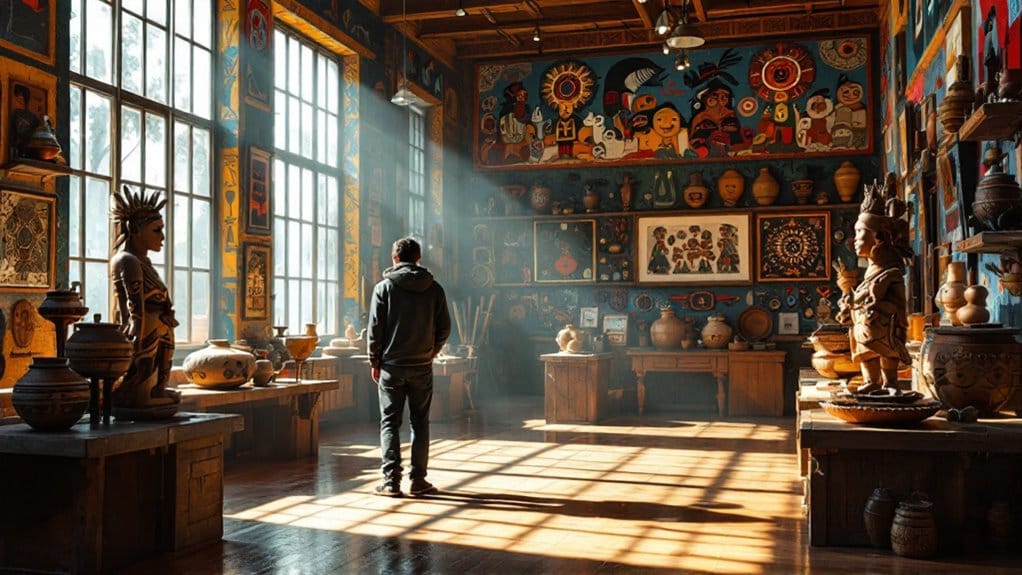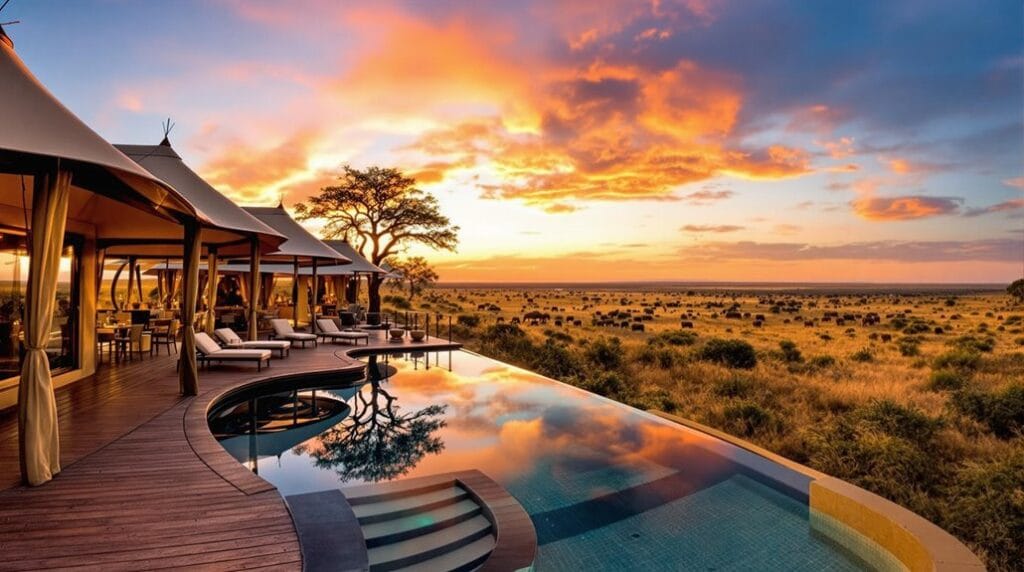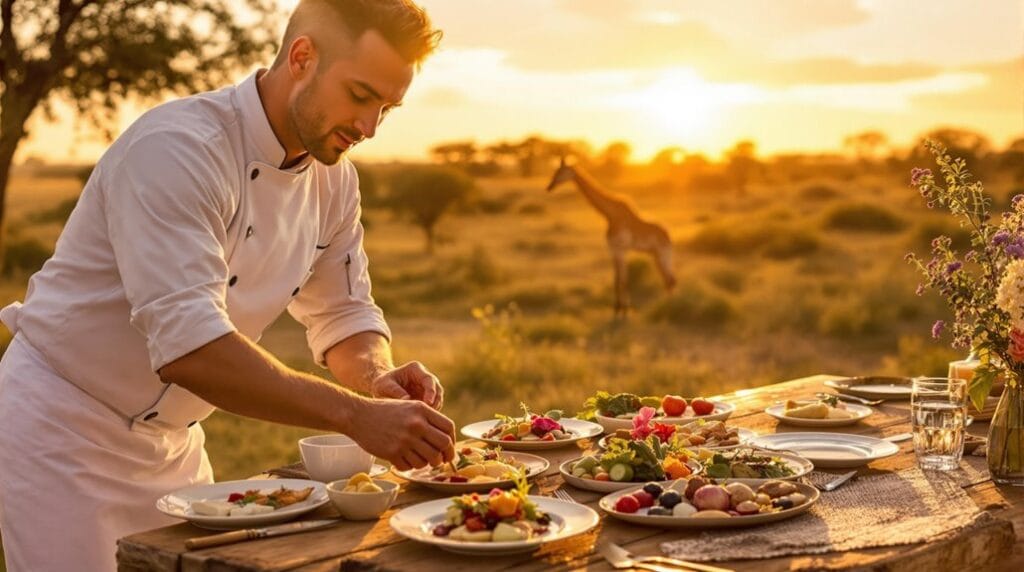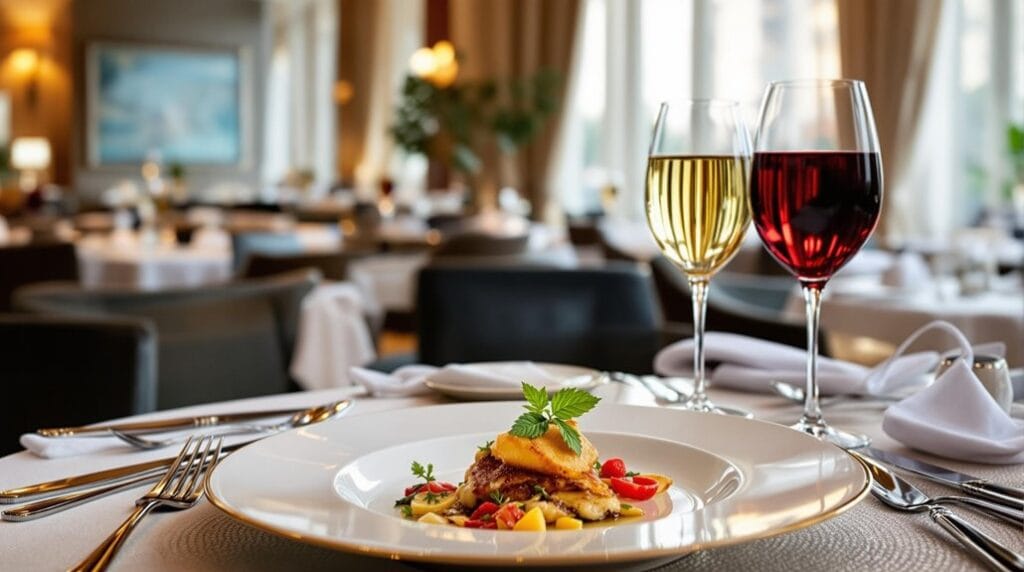Yes, Indigenous art galleries in Africa are often overlooked. These galleries play a crucial role in preserving cultural heritage and showcasing talented local artists. However, they face significant challenges like limited funding and visibility. Only about 15% of art galleries focus on Indigenous art, which makes it hard for these artists to gain recognition. Despite a growing interest in African art, many galleries struggle against larger commercial institutions. These barriers can hamper artistic development. If you explore further, you'll discover how community support and new strategies can spark meaningful change for Indigenous art in Africa.
Key Takeaways
- Indigenous art galleries in Africa face significant challenges, with only 15% focusing on Indigenous art, leading to limited visibility for artists.
- There is systemic underrepresentation of Indigenous artists in major exhibitions, hindering their recognition and opportunities.
- Financial constraints and competition with larger institutions overshadow Indigenous narratives, affecting gallery sustainability and artist development.
- Local galleries struggle to compete with global trends, with only 2-3% of the global art market representing Indigenous voices.
- Community engagement and partnerships are essential for enhancing support and visibility for Indigenous art within the broader art ecosystem.
Significance of Indigenous Art Galleries
Supporting local artistic traditions, Indigenous art galleries in Africa play an important role in preserving the cultural heritage of various communities. These galleries offer you a unique opportunity to connect with the rich history and diverse expressions of Indigenous populations. By showcasing the work of emerging local artists, they provide a crucial platform for creative voices that might otherwise go unheard.
However, many galleries face significant challenges, including limited funding and infrastructure. This situation restricts their ability to reach wider audiences and compete with larger art institutions. The absence of representation in global art markets highlights the urgent need for more support for local artists.
By prioritizing Indigenous art galleries, you can help foster a more inclusive narrative that celebrates African contemporary art. Engaging with these galleries not only enriches your understanding of cultural heritage but also contributes to the growth of a vibrant artistic community.
When you support these spaces, you become part of a movement that seeks to uplift Indigenous creators and honor their contributions to the broader art world. Together, we can guarantee that these important traditions thrive for generations to come.
Historical Overview of African Art
When you look at the impact of African art, you'll notice its profound influence on modern artists like Picasso and Matisse.
However, the rich traditions and contributions of Indigenous artists often get sidelined in art history. This underrepresentation highlights the need for a broader understanding of Africa's artistic legacy and its relevance today.
Influence on Modern Artists
Throughout history, Indigenous art from Africa has profoundly shaped the landscape of modern artistic expression, bridging cultures and inspiring countless artists across the globe. African art's dynamic forms and rich narratives have influenced movements and styles, encouraging you to explore deeper connections with the world around you.
Consider the vibrant elements that speak to this influence:
- Bold patterns that dance across canvases
- Sculptures that breathe life into stories
- Textures that invite tactile exploration
- Colors that evoke a sense of place and community
Even though Indigenous populations' contributions have often been overlooked, their artistic expressions are at the heart of contemporary art, influencing renowned figures like Picasso and Matisse. These modern artists drew inspiration from African art, igniting a transformative wave in their work.
Today, platforms like the 1-54 Contemporary African Art Fair are finally showcasing the diversity of Indigenous artists, paving the way for a broader appreciation of their talent.
As interest in African contemporary art rises, it's time to recognize and celebrate the profound impact these artists have had on modern art, weaving a rich tapestry of cultural expression for all to share.
Underrepresentation in Art History
The historical narrative of art has often marginalized African contributions, relegating them to the domain of the "primitive" or ignoring them entirely. You mightn't realize how deeply this underrepresentation affects your understanding of cultural richness.
Despite the incredible diversity and significance of Indigenous populations' artistic traditions, African art rarely finds its rightful place in mainstream discussions or educational settings. This exclusion not only diminishes the appreciation of these vibrant cultures but also overlooks their profound influence on modern art movements.
Artists like Picasso and Matisse drew inspiration from African aesthetics, yet the stories behind these influences remain largely unacknowledged. Scholars are now advocating for a shift in perspective, urging us to recognize the mathematical principles embedded in African art and design. This complexity deserves to be celebrated, not sidelined.
As we work to create inclusive narratives, it's vital to highlight the breadth of Indigenous artistic contributions. By acknowledging the historical underrepresentation of African art, you can help foster a deeper appreciation for the cultural heritage that enriches our global artistic landscape.
Together, we can guarantee that every voice is heard and valued in the world of art.
Current Trends in Indigenous Art
You'll notice that the Indigenous art market is experiencing growth, yet many artists still struggle with representation and accessibility.
While community initiatives are helping to spotlight these unique expressions, significant barriers remain.
Understanding these trends is essential for appreciating the full scope of Indigenous art in Africa today.
Indigenous Art Market Growth
Indigenous art in Africa is booming, capturing the attention of both local and international collectors enthusiastic to explore its rich cultural narratives. The art market is witnessing remarkable growth, fueled by a renewed interest in the works of indigenous populations and the stories they tell.
Here are some exciting aspects driving this trend:
- Vibrant exhibitions like the 1-54 Contemporary African Art Fair showcase the talents of emerging artists.
- Auction sales for indigenous art are soaring, with significant pieces fetching impressive prices.
- Social media is empowering young artists to reach global audiences and share their unique perspectives.
- Investment in local galleries and museums is essential for nurturing this burgeoning art scene.
This newfound appreciation isn't just about aesthetics; it's about connecting with African cultural heritage and celebrating the diverse voices within it.
As an art lover, you can feel a sense of belonging as you support these emerging artists, helping to shape a more inclusive art market.
Representation and Accessibility Issues
Many artists struggle to gain visibility in the bustling art scene of Africa, facing significant representation and accessibility challenges. Indigenous populations often find their voices drowned out in the wider narrative, as major exhibitions frequently overlook their contributions. This lack of representation not only stifles individual artists but also undermines the rich tapestry of cultural artifacts that define their heritage.
Accessibility is another major hurdle; many Indigenous artists lack the infrastructure and funding needed to showcase their work effectively. You may notice that galleries dedicated to Indigenous art often struggle to attract diverse audiences due to limited marketing and outreach.
Even as interest in Indigenous art grows, systemic barriers remain, making it difficult for these artists to engage with the public and gain the recognition they deserve. Efforts to promote Indigenous art are increasing, but without addressing these representation challenges and accessibility issues, true appreciation for these artists and their cultural contributions may remain just out of reach.
It's essential for art lovers and communities to advocate for the visibility and support of Indigenous artists, ensuring they've a place in the vibrant African art scene.
Barriers to Visibility and Success
The landscape of Indigenous art galleries in Africa faces significant hurdles that hinder visibility and success for emerging artists. These barriers create a challenging environment where Indigenous populations struggle to gain recognition for their contributions to art in Africa.
Consider the following obstacles:
- Insufficient local art infrastructure limits exposure for artists.
- Financial challenges prevent participation in international exhibitions.
- A lack of representation in the art world sidelines Indigenous artists.
- Closures of galleries in major cities diminish local showcasing opportunities.
These factors collectively restrict visibility for Indigenous art, pushing it further into the shadows of mainstream and Western aesthetics.
Emerging talents often find themselves at a disadvantage, unable to connect with broader audiences or access essential resources. As you think about the vibrant cultural expressions of these artists, it's crucial to acknowledge how these barriers affect their journey.
Without support and recognition, the rich tapestry of Indigenous art in Africa risks fading into obscurity. By understanding these challenges, you can help foster a more inclusive art scene that embraces the unique narratives and perspectives that Indigenous artists have to offer.
Role of Indigenous Artists
Artists from Indigenous communities in Africa hold a vital position in the preservation and evolution of cultural heritage through their traditional art forms. These talented individuals draw upon techniques and materials passed down through generations, ensuring that their rich histories remain alive.
Yet, despite their significance, many Indigenous artists face significant hurdles in gaining the recognition they deserve. With only 15% of art galleries in Africa focusing on Indigenous art, the visibility of these artists in the broader art landscape is alarmingly low. This limited representation means that the narratives and expressions of Indigenous populations often go unheard.
While African artists skillfully weave contemporary themes into their work, bridging traditional practices with modern issues, they struggle to find adequate platforms to showcase their unique perspectives. The absence of dedicated galleries and funding opportunities further hampers the growth and sustainability of Indigenous art practices.
It's essential to foster an environment where these artists can thrive, ensuring their cultural heritage is celebrated and preserved for future generations. By supporting Indigenous artists, we can help create a more inclusive art scene that honors the richness of Africa's diverse cultures.
Impact of Globalization on Local Art
Globalization has transformed the landscape of local art, bringing both opportunities and challenges for Indigenous artists in Africa. While you might see more African art gaining exposure through international platforms, local galleries often struggle to compete with global trends. This can limit the visibility of Indigenous populations and their unique expressions.
Consider the following elements at play:
- The vibrant colors of traditional textiles, telling stories of ancestry.
- The rhythmic beats of drums echoing the heartbeat of the community.
- The intricate carvings that preserve age-old traditions.
- The contemporary pieces reflecting modern struggles and triumphs.
Despite the rising interest in African contemporary art, only 2-3% of the global art market represents these voices. Local galleries, faced with financial and logistical challenges, often prioritize commercially viable works, sidelining traditional Indigenous practices.
To truly support Indigenous artists, investment in local art infrastructure is essential. By fostering local galleries and providing resources, we can guarantee that diverse artistic voices not only survive but thrive in the global arena.
Your support and engagement with these galleries can make a significant difference in preserving and celebrating Indigenous art.
Case Studies of Notable Galleries
While exploring the vibrant art scene in Africa, you'll discover several notable galleries that champion Indigenous voices and showcase their unique expressions.
The Zeitz Museum of Contemporary Art Africa in Cape Town stands out as the largest museum dedicated to contemporary art from the African continent and its diaspora, featuring a diverse range of Indigenous artists.
Similarly, the Goodman Gallery, with locations in Johannesburg and Cape Town, plays a vital role in promoting Indigenous populations, helping artists establish their careers in both local and international markets.
In Ghana, the Nubuke Foundation serves as an essential platform for contemporary Ghanaian and African art, allowing Indigenous artists to exhibit their work and engage with the community.
Meanwhile, the Nirox Foundation in South Africa hosts an annual sculpture park and residency program that focuses on Indigenous art, enhancing visibility within the contemporary art scene.
Though the National Museum of African Art in Washington, D.C., isn't on the African continent, it greatly highlights Indigenous art, showcasing the global interest in African cultural expressions.
Together, these galleries foster a deeper appreciation for the rich tapestry of contemporary Indigenous art across Africa.
Cultural Heritage and Tourism
Indigenous art galleries in Africa are essential not only for preserving local cultural heritage but also for boosting tourism by offering visitors authentic experiences. When you step inside, you connect with the rich tapestry of Indigenous populations and their stories. These galleries showcase the beauty of African artistic traditions, yet many remain underfunded and overlooked.
Imagine exploring:
- Vibrant murals that narrate local legends,
- Handcrafted artifacts steeped in tradition,
- Live demonstrations of age-old techniques,
- Engaging workshops where you can learn from local artists.
Incorporating indigenous art galleries into broader tourism strategies can elevate their visibility and support the local economy. When tourists engage with these galleries, they not only appreciate the art but also the culture behind it. This fosters a sense of belonging for both visitors and the communities involved, enriching their experiences.
Collaborative initiatives between galleries and tourism boards can strengthen these connections, highlighting the importance of cultural heritage. By promoting these spaces, you help guarantee that the diverse voices of African artistic traditions are celebrated, creating a vibrant exchange that benefits everyone involved.
Future Prospects for Indigenous Art
As you wander through the vibrant halls of indigenous art galleries, you'll discover a future brimming with potential. The rich cultural heritage of indigenous populations in Africa is finally gaining the attention it deserves.
Despite facing challenges like limited funding and visibility, there's a growing interest in African art, especially among younger generations. This trend opens doors for indigenous art galleries to flourish.
Investment in local infrastructure is vital. By establishing more galleries dedicated to indigenous art, you can foster appreciation and understanding of Africa's diverse artistic narratives.
Collaborative efforts between these galleries and international institutions can enhance visibility and create platforms for local artists. Imagine the impact of showcasing their work on a global stage, where their stories and traditions resonate with a wider audience.
As the art world shifts, you have an opportunity to be part of this movement. Supporting indigenous galleries not only helps preserve cultural heritage but also connects you to a community that values authenticity and creativity.
Together, you can celebrate the unique voices of indigenous populations and guarantee their art continues to inspire future generations.
Importance of Community Support
Community support plays a crucial role in the success of Indigenous art galleries in Africa.
By partnering with local organizations, you can help build cultural awareness and foster a deeper connection between the galleries and their audiences.
This engagement not only enhances visitor experiences but also guarantees that diverse Indigenous narratives are celebrated and preserved.
Role of Local Partnerships
Local partnerships are essential for the success of art galleries in Africa, especially those showcasing Indigenous art.
These connections foster community support, creating vibrant networks that enhance visibility and opportunities for artists.
When galleries collaborate with local organizations, they tap into invaluable resources and knowledge, paving the way for meaningful cultural exchange.
Imagine participating in:
- Interactive workshops that teach traditional art techniques
- Exhibitions that celebrate local heritage and stories
- Educational programs that engage schools and families
- Collaborative events that unite artists and the community
Building Cultural Awareness
Support from the community has a profound impact on building cultural awareness around Indigenous art galleries in Africa. When you engage with these galleries, you help elevate the voices of Indigenous populations and their rich artistic expression.
Your community support not only aids in preserving local cultures but also nurtures a deeper understanding among younger generations who might otherwise overlook these essential art forms.
By actively participating in initiatives that connect local artists with community members, you can foster an environment where cultural awareness flourishes. These collaborative projects often reveal the beauty and complexity of Indigenous art, breaking down barriers that many artists face due to inadequate local infrastructure.
When you champion these galleries, you contribute to a more inclusive representation of African art, enriching the global narrative and challenging Eurocentric perspectives.
Your involvement can spark interest and appreciation for Indigenous art, encouraging others to explore and celebrate these unique cultural expressions.
Together, we can create sustainable pathways for artistic expression that honor and uplift Indigenous communities, ensuring that their stories and talents are both recognized and cherished.
Let's build this cultural bridge and support the vibrant tapestry of Indigenous art in Africa.
Enhancing Visitor Engagement
Visitor engagement in Indigenous art galleries thrives when there's a strong connection to the community. This connection not only sustains these galleries but enriches the experiences of every visitor who walks through the doors.
When local communities rally behind these cultural hubs, you'll notice:
- Vibrant workshops where you can explore the techniques of indigenous art.
- Interactive sessions that invite you to share stories and perspectives.
- Collaborative projects with schools that spark young imaginations.
- Exhibitions curated by community members, showcasing their pride and heritage.
Frequently Asked Questions
Why Did Artists and Collectors Not Appreciate African Tribal Art at First?
Artists and collectors didn't appreciate African tribal art at first due to cultural misconceptions and historical biases that painted these works as "primitive."
This artistic undervaluation stemmed from market dynamics favoring European art, leaving African creators unrecognized. You might feel a sense of belonging by understanding how these narratives shaped perceptions.
Thankfully, contemporary interest is changing the conversation, allowing for a richer appreciation of the depth and beauty inherent in traditional African art forms.
How Were Artists in Tribal Africa Viewed?
In tribal Africa, you'd see artists as essential custodians of cultural significance. Their artistic expression wasn't just for aesthetics; it held deep historical context and community impact.
Instead of individual fame, they worked collaboratively, ensuring traditions thrived through generations. You'd recognize that their role varied, with some revered as advisors, while others faced challenges.
This communal focus highlights the importance of collective identity in shaping the rich tapestry of African art and culture.
Why Is the Display of African Art in Museums Problematic?
The display of African art in museums often raises issues of cultural appropriation and representation.
You'll notice that many artifacts lack historical context, reducing their rich narratives to mere objects for viewing. This misrepresentation diminishes the true value of the art and artists.
Additionally, market dynamics can skew perceptions, favoring Western interpretations over authentic voices.
Such practices not only alienate communities but also undermine the cultural significance that these works truly hold.
What Problems Are Facing African Artists?
Did you know that only 5% of African artists receive adequate funding to showcase their work? This highlights the severe funding challenges they face.
Without proper financial support, artists struggle with cultural preservation and often lack market access.
Representation issues further complicate their journeys, leaving many talented creators unnoticed.
It's essential for you to advocate for better resources and visibility, ensuring that African artists can thrive and share their rich cultural narratives with the world.
Conclusion
Just like a seed buried in rich soil, indigenous art galleries in Africa hold immense potential, waiting for the sunlight of recognition to help them flourish. By nurturing these spaces, you can help cultivate a vibrant landscape where unique voices thrive and cultural heritage blooms. Don't let these treasures remain hidden; embrace the power of community support and let the world see the beauty rooted in Africa's diverse artistic legacy. Together, you can bring these stories to life.








